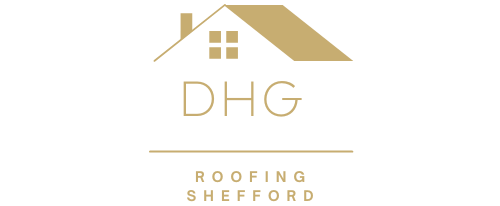Green Living in the Sky: Tips for Designing Flat Roofs with Rooftop Gardens
Introduction: Rooftop gardens are becoming increasingly popular as urban dwellers seek to maximise green space and enhance sustainability. Flat roofs offer the perfect canvas for creating lush and vibrant rooftop gardens, transforming unused space into beautiful and functional outdoor sanctuaries. At DHG Roofing Shefford, we believe in the power of green roofs to improve urban environments and promote eco-friendly living. In this blog post, we’ll share valuable tips for designing flat roofs with rooftop gardens, ensuring a harmonious blend of aesthetics, functionality, and sustainability.
Structural Considerations:
- Before embarking on a rooftop garden project, it’s crucial to assess the structural integrity of the existing roof. Flat roofs must support the additional weight of soil, plants, and water retention systems. Consulting with a structural engineer can help ensure the roof can safely accommodate the garden’s load without compromising its integrity.
Waterproofing and Drainage:
- Proper waterproofing and drainage are essential for preventing water infiltration and protecting the underlying structure from damage. Installing a high-quality waterproofing membrane and incorporating efficient drainage systems, such as gutters, downspouts, and drainage mats, will help manage excess water and prevent ponding on the roof surface.
Selection of Plants:
- When designing a rooftop garden, choose plants well-suited to the local climate and growing conditions. Opt for drought-tolerant species that require minimal irrigation and maintenance, such as succulents, ornamental grasses, and native wildflowers. Consider incorporating edible plants and herbs for a functional and sustainable garden that provides fresh produce.
Irrigation Systems:
- To ensure proper hydration for rooftop plants, install an efficient irrigation system that delivers water directly to the root zone while minimising runoff and water waste. Drip irrigation or soaker hoses are ideal for rooftop gardens, as they deliver water slowly and evenly, promoting healthy plant growth and reducing the risk of water damage to the roof structure.
Wind Protection:
- Rooftop gardens are often exposed to strong winds, which damage delicate plants and disrupt the ecosystem. Incorporating windbreaks, such as trellises, screens, or hedges, can help mitigate wind exposure and create a more sheltered environment for plants and gardeners.
Access and Safety:
- Install sturdy stairs, ladders, or access hatches to ensure safe and convenient access to the rooftop garden. Implement safety measures, such as guardrails and non-slip surfaces, to prevent accidents and injuries. Consider incorporating seating areas, pathways, and lighting to enhance the usability and enjoyment of the rooftop space.
Conclusion: Designing a flat roof with a rooftop garden offers numerous benefits, including improved aesthetics, enhanced environmental sustainability, and expanded outdoor living space. Experts can help create custom rooftop garden solutions that seamlessly integrate with flat roof structures while prioritising durability, functionality, and beauty.
Call us on: 01462 411 095
Click here to find out more about DHG Roofing Shefford
Click here to complete our contact form and see how we can help with your roofing needs.

